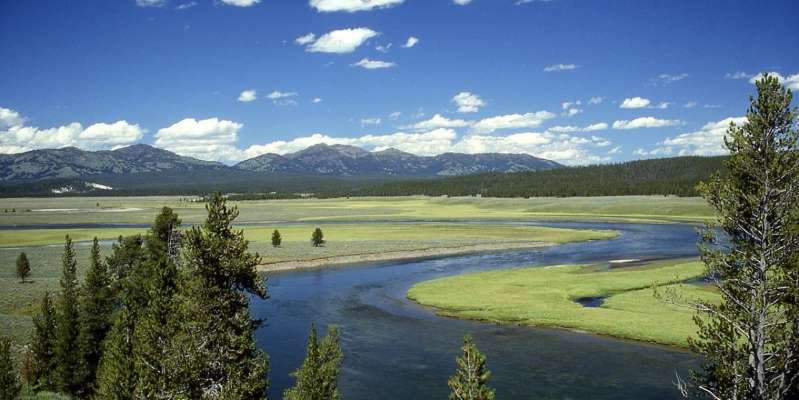
Yellowstone volcanoes are 33 million years old
The heat source that powers the volcanic system of Yellowstone National Park in the western United States is much older than scientists believed. According to new calculations, it is about 50 million years old, according to GSA Today .
The Yellowstone hotspot is a vast volcanic system that includes a caldera (dormant “supervolcano”) and a geyser called Old Voyaka, which spews hot water every 44-125 minutes.
For a long time, it was believed that this area formed about 17 million years ago. But more and more geological evidence indicates that this dating is incorrect.
It is already known that the Yellowstone hotspot has been moving over millions of years due to ever-changing tectonic plates. The authors of the new study found traces of it much further than one might expect – in the northwestern waters of the Pacific Ocean, hundreds of kilometers from its current location.
Yellowstone National Park stretches for 8991 square kilometers, mostly in northwestern Wyoming, but covers parts of Montana and Idaho. Below it, in the bowels of the Earth, there is an abnormal “hot zone” that feeds on hot (but not molten) material.
This substance can extend to the border between the mantle and the core of the planet. The hot material gradually rises to the surface, where it disintegrates and melts to form magma. The magma, in turn, feeds the magma chambers below Yellowstone and “activates” geysers and hot springs.
According to scientists, the Yellowstone hotspot leaves its mark in different areas as the North American plate moves. As the plate moves southwest over the hotspot, the center of volcanic activity appears to migrate northeast.
“So there is a volcanic trail that runs southwest from present-day Yellowstone across the Serpentine River Plain in southern Idaho. These ancient volcanic centers were responsible for particularly powerful eruptions, ”the experts explained.
A new study has revealed evidence of massive volcanic eruptions that occurred off the coast of North America about 50-55 million years ago. Some of the ancient lava has survived on the ocean floor off the coast of the Pacific Northwest. The chemical composition of the sediment indicated that it is associated with an “early version of the Yellowstone hotspot.”
But these eruptions sharply declined about 22 million years ago and stopped completely about 20 million years ago. Scientists attributed this to the displacement of tectonic plates, when the “hot spot” was under the North American continent – layers of solid rock blocked magma. About 17 million years ago, the accumulated magma broke through the ancient plate and caused the eruption of basalt – from that time the formation of Yellowstone began in the form in which it exists to this day.
“This study shows that the continuous collection and study of data is critical and can change our view of geological history and understanding of something as important as the Yellowstone magma system,” the authors of the scientific paper emphasized.
Earlier it was reported that traces of two major eruptions were found in Yellowstone. They happened 9 and 8.7 million years ago.

